
Spanish Town: The Heartbeat of Virgin Gorda
Discover Spanish Town, Virgin Gorda: A serene Caribbean oasis with breathtaking natural wonders, historic sites, and a welcoming atmosphere.
Spanish Town, located on the island of Virgin Gorda in the British Virgin Islands, is a picturesque and charming destination that boasts a rich cultural history and stunning natural beauty. Known for its laid-back atmosphere and welcoming locals, Spanish Town offers an authentic Caribbean experience away from the more bustling tourist spots. One of the highlights of visiting Spanish Town is The Baths, a geological wonder featuring giant boulders, grottoes, and crystal-clear tidal pools. Exploring this natural labyrinth is a must-do activity, providing unique photo opportunities and a chance to swim in secluded coves. The nearby Devil's Bay, accessible via a trail from The Baths, is another gem where you can relax on soft white sands and enjoy the tranquil turquoise waters. Spanish Town is also home to the historic Copper Mine Ruins, which offer a glimpse into the island’s past. The ruins, set against the backdrop of the ocean, are a testament to the 19th-century mining operations that once thrived here. The site provides a fascinating look at the island's industrial heritage and offers panoramic views of the surrounding waters. For sailing enthusiasts, the Virgin Gorda Yacht Harbour in Spanish Town is a hub of activity. The marina is a starting point for many boating adventures, including day trips to nearby islands. The town’s vibrant waterfront area is dotted with shops, restaurants, and bars, offering visitors a taste of local cuisine and the chance to unwind with a refreshing drink as they watch the sun set over the horizon.
Local tips in Spanish Town
- Visit The Baths early in the morning to avoid the crowds and get the best photos.
- Bring water shoes for exploring the rocky areas at The Baths and Devil's Bay.
- Check the marina's schedule for sailing tours and book in advance during peak season.
- Explore local eateries for authentic Caribbean dishes, especially seafood.
- Wear sun protection and stay hydrated, as the Caribbean sun can be intense.
Spanish Town: The Heartbeat of Virgin Gorda
Spanish Town, located on the island of Virgin Gorda in the British Virgin Islands, is a picturesque and charming destination that boasts a rich cultural history and stunning natural beauty. Known for its laid-back atmosphere and welcoming locals, Spanish Town offers an authentic Caribbean experience away from the more bustling tourist spots. One of the highlights of visiting Spanish Town is The Baths, a geological wonder featuring giant boulders, grottoes, and crystal-clear tidal pools. Exploring this natural labyrinth is a must-do activity, providing unique photo opportunities and a chance to swim in secluded coves. The nearby Devil's Bay, accessible via a trail from The Baths, is another gem where you can relax on soft white sands and enjoy the tranquil turquoise waters. Spanish Town is also home to the historic Copper Mine Ruins, which offer a glimpse into the island’s past. The ruins, set against the backdrop of the ocean, are a testament to the 19th-century mining operations that once thrived here. The site provides a fascinating look at the island's industrial heritage and offers panoramic views of the surrounding waters. For sailing enthusiasts, the Virgin Gorda Yacht Harbour in Spanish Town is a hub of activity. The marina is a starting point for many boating adventures, including day trips to nearby islands. The town’s vibrant waterfront area is dotted with shops, restaurants, and bars, offering visitors a taste of local cuisine and the chance to unwind with a refreshing drink as they watch the sun set over the horizon.
When is the best time to go to Spanish Town?
Iconic landmarks you can’t miss
The Baths
Explore the stunning rock formations and pristine beaches of The Baths in the British Virgin Islands, a perfect escape for nature lovers and adventure seekers.

Cyril B. Romney Tortola Pier Park
Explore the vibrant Cyril B. Romney Tortola Pier Park, where shopping, dining, and entertainment meet the stunning beauty of the British Virgin Islands.
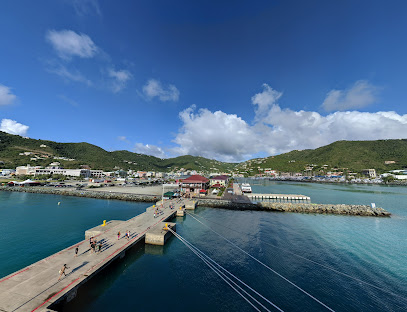
CocoMaya Restaurant
Experience the ultimate Asian fusion dining at CocoMaya Restaurant in Virgin Gorda, where Caribbean charm meets exquisite flavors in a breathtaking setting.
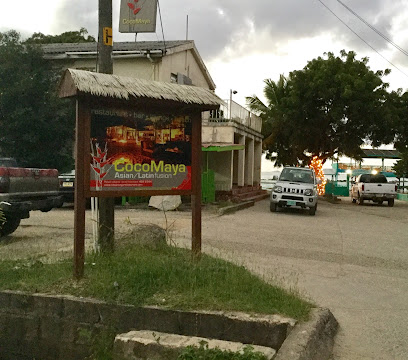
Rosewood Little Dix Bay
Discover the serene luxury of Rosewood Little Dix Bay, a premier resort hotel in the British Virgin Islands, where nature and elegance meet.

Devil's Bay National Park
Discover the stunning landscapes and unique rock formations of Devil's Bay National Park, a must-visit natural wonder in the British Virgin Islands.
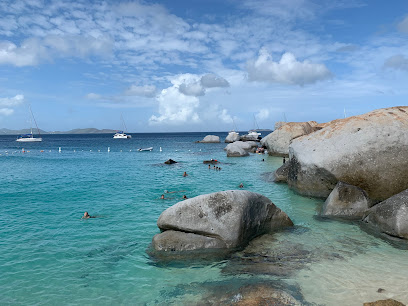
Hog Heaven
Discover the Caribbean's culinary treasures at Hog Heaven, where breathtaking views meet delicious local flavors.
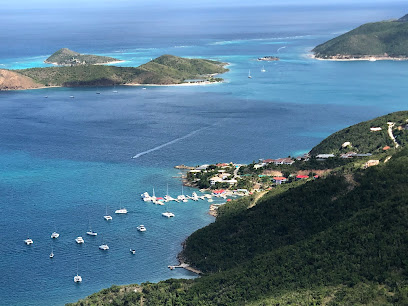
Soper's Hole Wharf & Marina
Explore the captivating charm of Soper's Hole Wharf & Marina, where adventure meets relaxation in the heart of the British Virgin Islands.
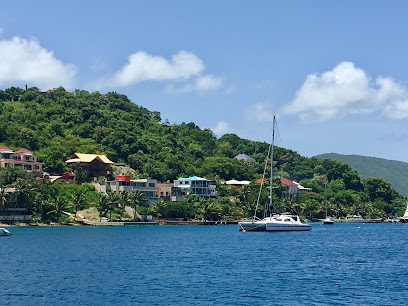
Top of the Baths
Experience the best of Caribbean flavors and stunning views at Top of the Baths in the British Virgin Islands, a must-visit dining destination.
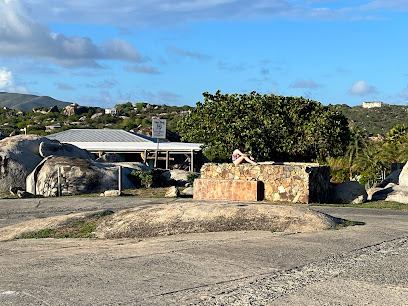
Cane Garden Bay
Discover the beauty of Cane Garden Bay in the British Virgin Islands, a perfect blend of relaxation, adventure, and local culture.
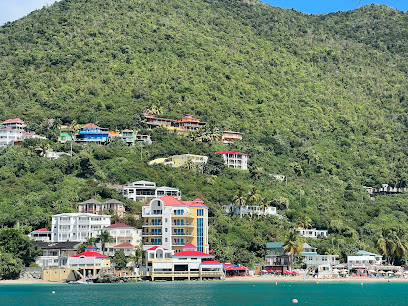
J.R. O'Neal Botanical Gardens
Explore the lush beauty of J.R. O'Neal Botanical Gardens, a serene oasis that showcases the rich flora of the British Virgin Islands in a tranquil setting.
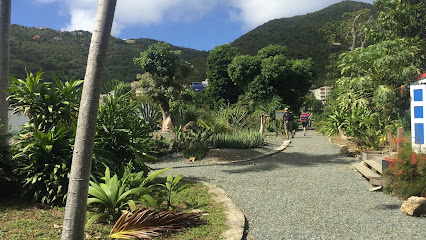
Gorda Peak National Park
Discover the breathtaking beauty of Gorda Peak National Park, a paradise for nature lovers and adventure seekers in the British Virgin Islands.
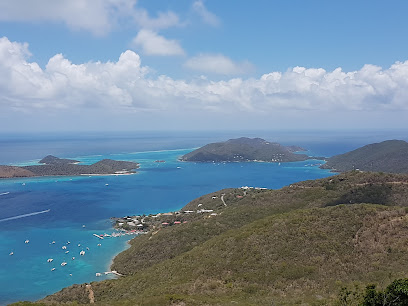
Callwood Rum Distillery
Immerse yourself in the rich tradition of rum-making at Callwood Rum Distillery, a historic gem in Cane Garden Bay, British Virgin Islands.

Virgin Gorda Yacht Harbour
Experience unparalleled beauty and adventure at Virgin Gorda Yacht Harbour, your gateway to the breathtaking British Virgin Islands.
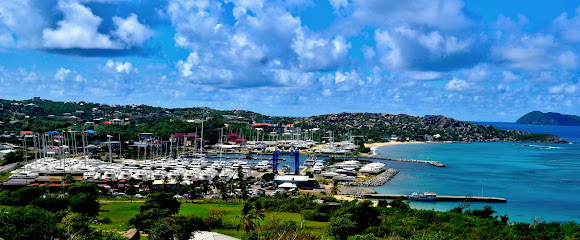
Chez Bamboo Restaurant
Experience the vibrant flavors of the British Virgin Islands at Chez Bamboo Restaurant, where local ingredients meet tropical ambiance.
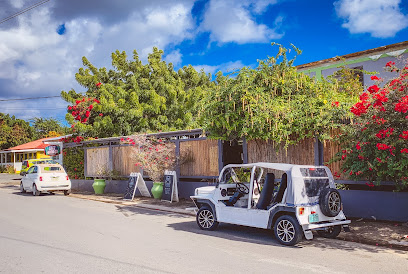
Aromas Cigar & Martini Bar, BVI
Experience luxury and relaxation at Aromas Cigar & Martini Bar in the British Virgin Islands, where premium cigars meet expertly crafted cocktails.
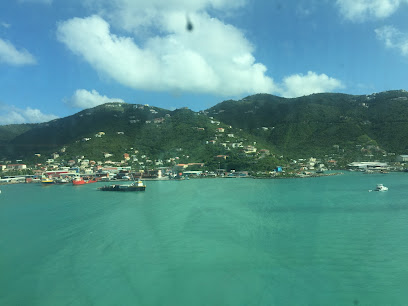
Unmissable attractions to see
Coral World Ocean Park
Explore the vibrant marine life at Coral World Ocean Park, a top tourist attraction in St. Thomas, Virgin Islands, offering unforgettable underwater experiences.
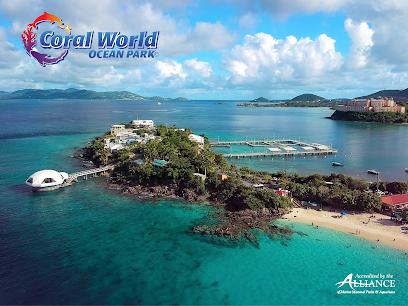
Virgin Islands National Park
Discover the breathtaking beauty of Virgin Islands National Park, a tropical paradise of stunning landscapes, rich history, and vibrant marine life.
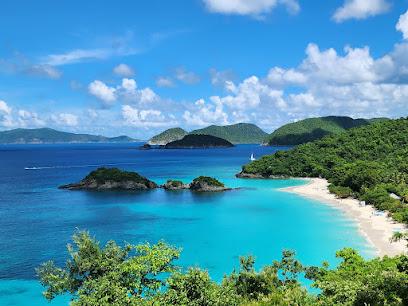
Parasail Virgin Islands
Experience breathtaking views and thrilling adventures with Parasail Virgin Islands at Sapphire Beach Marina, your gateway to unforgettable moments in St. Thomas.
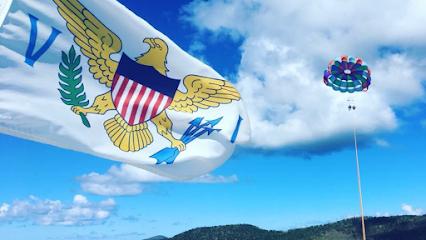
Coki Point Beach
Discover the pristine beauty of Coki Point Beach in St. Thomas, where turquoise waters and soft sands create the perfect Caribbean escape for all travelers.
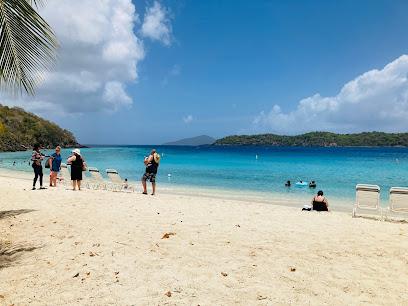
Soggy Dollar Bar
Discover the charm of Soggy Dollar Bar on Jost Van Dyke, where stunning views, vibrant atmosphere, and delicious cocktails await every traveler.

The Baths
Explore The Baths, an unforgettable beach destination in the British Virgin Islands, known for its stunning rock formations and crystal-clear waters.
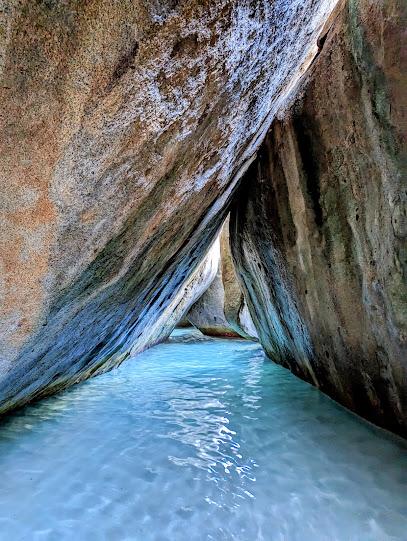
Lady Lynsey Catamaran
Explore the breathtaking Caribbean with the Lady Lynsey Catamaran, where adventure meets relaxation in stunning St. Thomas.

American Yacht Harbor
Discover the allure of American Yacht Harbor in St. Thomas, a vibrant marina filled with adventure, stunning views, and delicious dining options in the Caribbean.
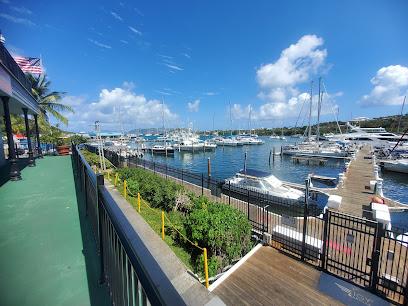
Lindquist Beach
Discover the tranquility of Lindquist Beach in St. Thomas, a breathtaking escape with pristine sands, clear waters, and unforgettable sunsets.
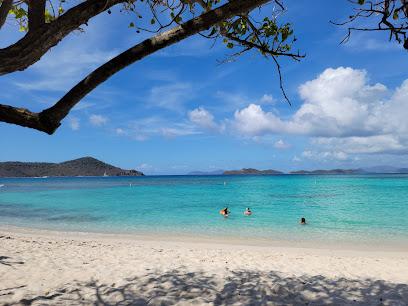
Annaberg Sugar Plantation
Explore the Annaberg Sugar Plantation, a captivating historical landmark in St. John, revealing the rich heritage of sugar production in the Caribbean.
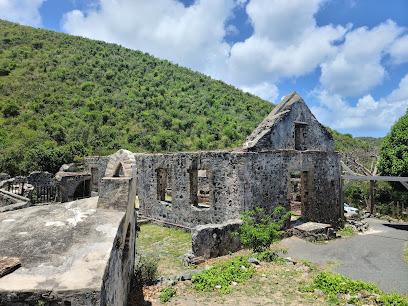
Honeymoon Beach
Discover the serene beauty of Honeymoon Beach in St. John, where crystal-clear waters meet soft sands for the ultimate tropical escape.
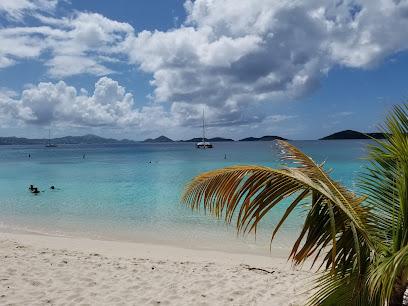
Foxy's, Jost Van Dyke, British Virgin Islands
Experience the vibrant atmosphere of Foxy's in Jost Van Dyke, a must-visit bar offering delicious drinks, local cuisine, and unforgettable live music.
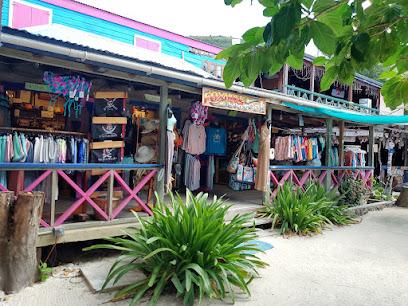
Hawksnest Beach
Discover the beauty and serenity of Hawksnest Beach, a must-visit destination in St. John, U.S. Virgin Islands, perfect for relaxation and adventure.
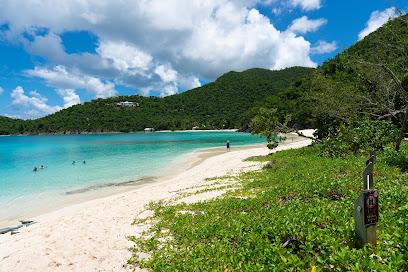
Trunk Bay
Discover the breathtaking beauty of Trunk Bay, a pristine beach offering crystal-clear waters, vibrant coral reefs, and a perfect escape in St. John.
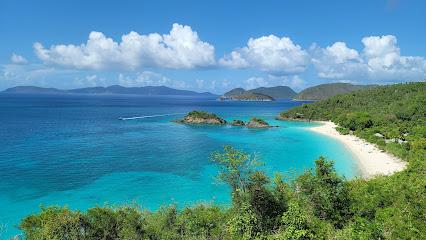
Sapphire Beach
Discover the idyllic beauty of Sapphire Beach in St. Thomas, where pristine sands meet crystal-clear waters for an unforgettable tropical experience.
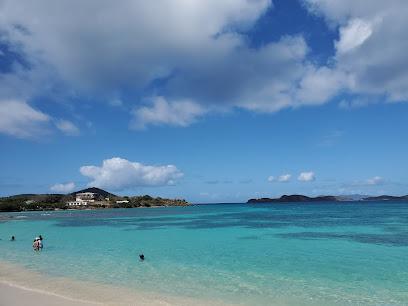
Essential places to dine
CocoMaya Restaurant
Experience culinary excellence at CocoMaya Restaurant in Virgin Gorda—where Asian fusion meets breathtaking Caribbean views.
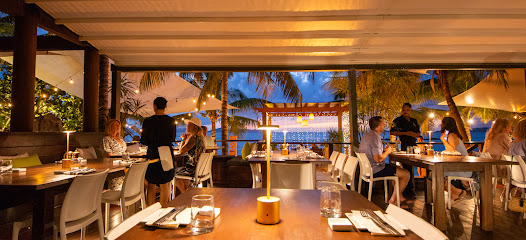
Hog Heaven
Discover Hog Heaven in Spanish Town for an unforgettable dining experience with stunning views and delicious Caribbean cuisine.
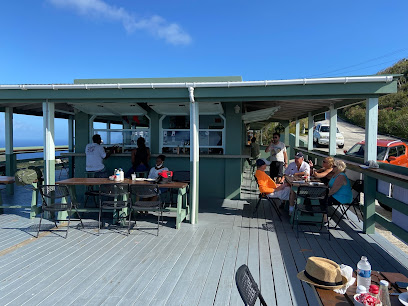
Capriccio di Mare
Experience authentic Italian cuisine at Capriccio di Mare in Road Town—where stunning waterfront views meet exquisite flavors.
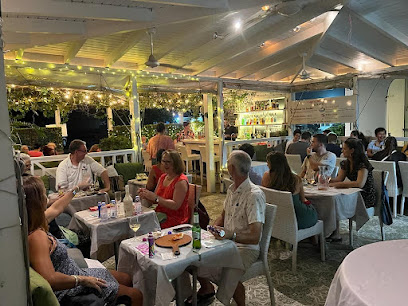
Top of the Baths
Discover culinary delights with breathtaking views at Top of the Baths in Spanish Town, British Virgin Islands.
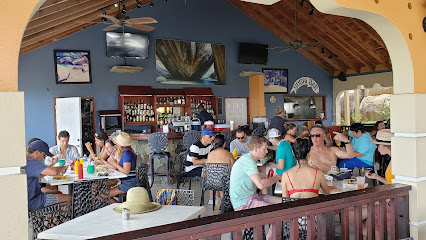
Trellis Bay Market Bar & Grill
Experience the flavors of the British Virgin Islands at Trellis Bay Market Bar & Grill—where fresh seafood meets vibrant island culture.
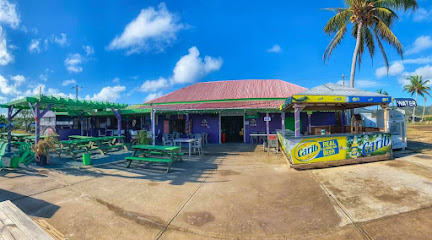
Sugarcane Restaurant
Discover exquisite Caribbean flavors at Sugarcane Restaurant in Virgin Gorda, where breathtaking views meet exceptional culinary experiences.
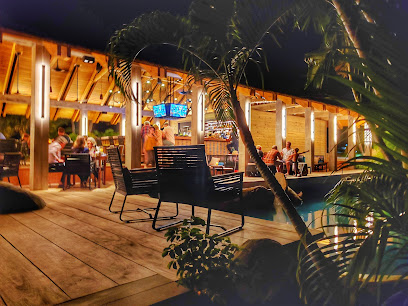
Chez Bamboo Restaurant
Discover Caribbean flavors at Chez Bamboo Restaurant in Spanish Town – where every dish tells a story.
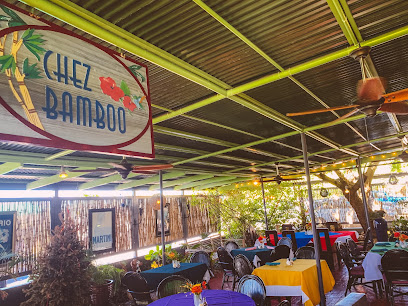
Fischer's Cove Beach Hotel & Restaurant
Experience the perfect blend of relaxation and gourmet dining at Fischer's Cove Beach Hotel & Restaurant on Virgin Gorda.

North Sound Bistro
Experience exquisite Caribbean cuisine with breathtaking waterfront views at North Sound Bistro in Spanish Town.
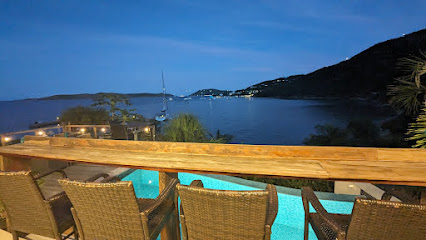
Loose Mongoose
Experience exquisite Caribbean cuisine at Loose Mongoose on Beef Island, British Virgin Islands - where every meal is a celebration of flavor and view.
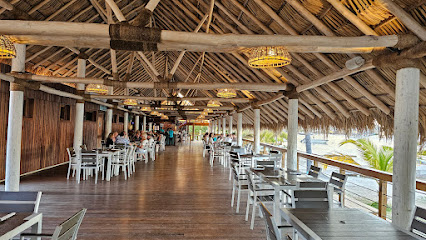
Mad Dog Bar & Restaurant
Discover culinary delights at Mad Dog Bar & Restaurant in Virgin Gorda, where vibrant flavors meet breathtaking island views.

the restaurant at Leverick bay
Experience exquisite dining with stunning views at Leverick Bay Restaurant in Virgin Gorda - where culinary excellence meets Caribbean charm.
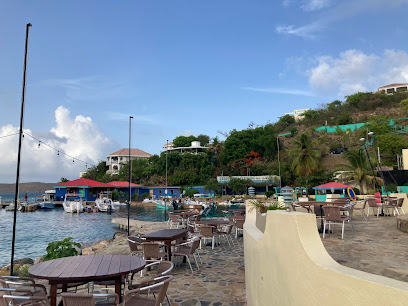
Turtle Restaurant
Experience delicious American cuisine with a Caribbean flair at Turtle Restaurant on Lambert Beach in Tortola.
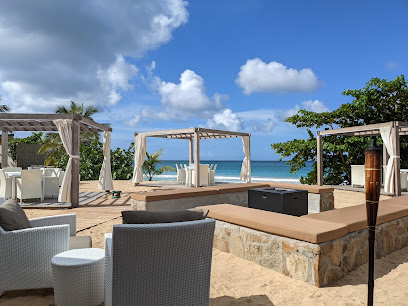
Radas Restaurant And Bar
Discover the authentic flavors of India at Radas Restaurant And Bar in Spanish Town - where every dish tells a story.
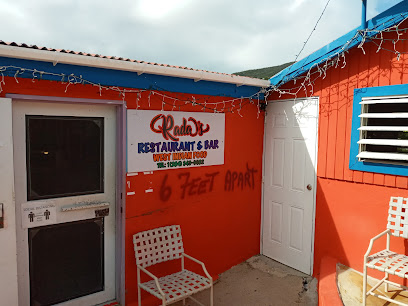
Bath and Turtle and Rendezvous Bar
Experience delightful Caribbean flavors at Bath and Turtle and Rendezvous Bar in Spanish Town - where every meal is a celebration of local culture.
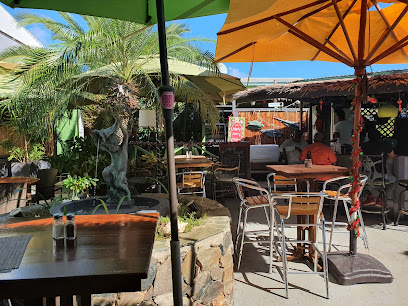
Markets, malls and hidden boutiques
Bitter End Yacht Club
Experience the charm of the Bitter End Yacht Club, a tropical haven in the British Virgin Islands, perfect for sailing, dining, and relaxation.
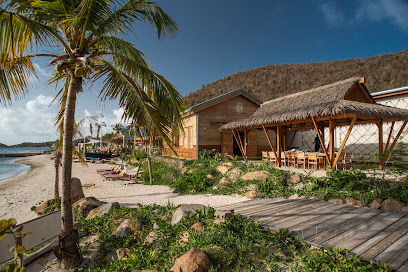
The Moorings: BVI (Tortola)
Explore the stunning British Virgin Islands with The Moorings yacht charters, your gateway to unforgettable sailing adventures.
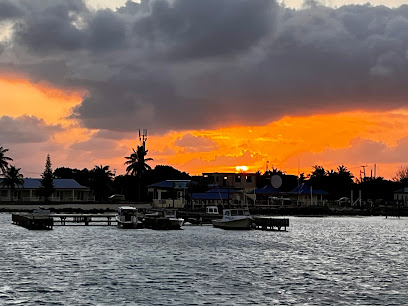
Rosewood Little Dix Bay
Immerse yourself in luxury and natural beauty at Rosewood Little Dix Bay, a premier resort hotel in the breathtaking British Virgin Islands.

Buck's Food Market
Discover the rich flavors of the British Virgin Islands at Buck's Food Market, your premier supermarket in Spanish Town, Virgin Gorda.
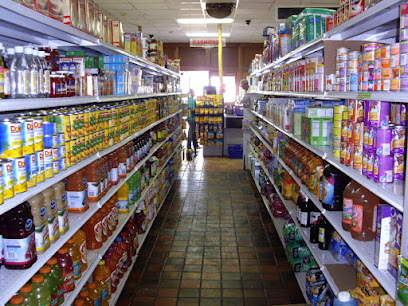
Island Department Store
Explore a vibrant shopping oasis at Island Department Store, where local culture meets diverse offerings in Road Town, British Virgin Islands.

Rosy's Supermarket
Discover the essence of Virgin Gorda at Rosy's Supermarket, where local flavors and friendly service meet in a vibrant shopping experience.
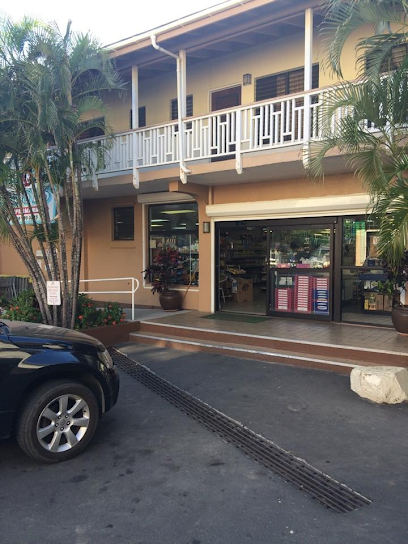
Spanish Town
Explore the vibrant shopping scene and rich culture of Spanish Town, a charming destination in the British Virgin Islands.
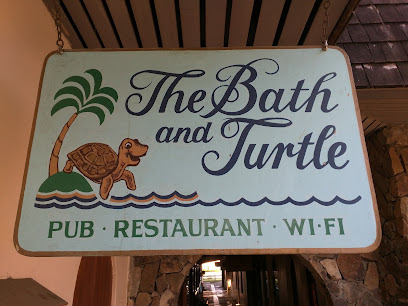
Crafts Alive Village
Discover unique souvenirs and local crafts at Crafts Alive Village, a vibrant shopping destination in Road Town, British Virgin Islands.
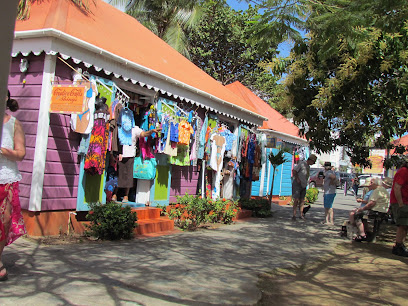
RiteWay Virgin Gorda
Experience the essence of Virgin Gorda at RiteWay Supermarket, your go-to spot for fresh produce and local delights.

Brew at Virgin Gorda Yacht Harbour
Discover Brew at Virgin Gorda Yacht Harbour: A delightful coffee shop offering exquisite brews and stunning harbor views in the British Virgin Islands.
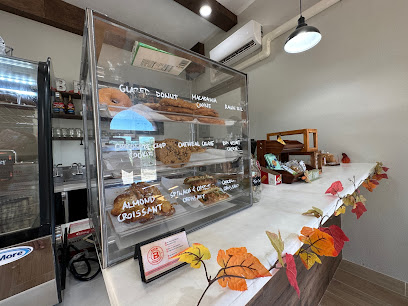
Spanish Town Cafe
Savor the authentic Caribbean flavors at Spanish Town Cafe, where every dish tells a story of the British Virgin Islands' rich culinary heritage.
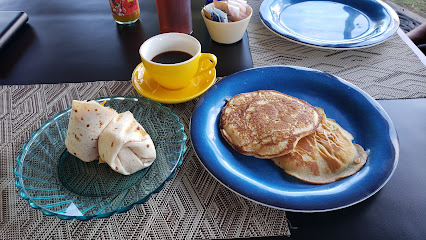
Dive BVI - Spanish Town
Discover the underwater treasures of Virgin Gorda with Dive BVI, offering premier scuba tours and unforgettable marine adventures.
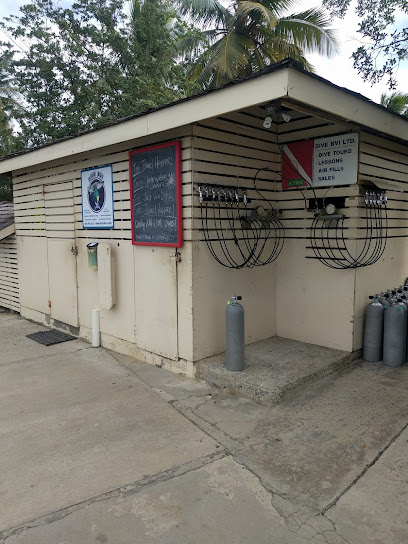
Mr. Nice Guy
Explore Mr. Nice Guy in Spanish Town, BVI: Your go-to variety shop for unique souvenirs and local crafts that capture the spirit of the islands.
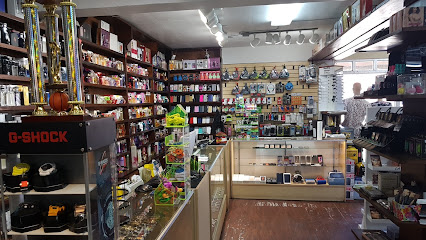
Varieties & Electronics
Explore Varieties & Electronics in Road Town for unique clothing and appliances, reflecting the vibrant culture of the British Virgin Islands.
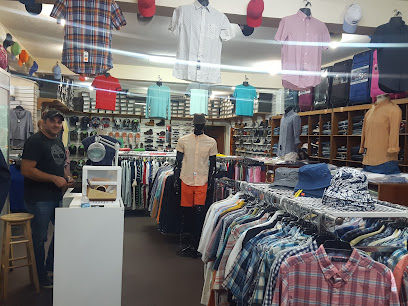
VI National Park Store
Shop for unique souvenirs and support conservation efforts at the charming VI National Park Store in St. John.
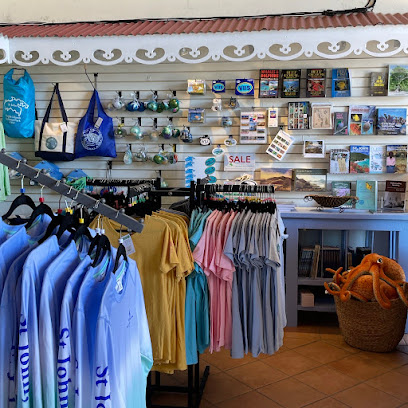
Essential bars & hidden hideouts
Chez Bamboo Restaurant
Experience the vibrant flavors of the Caribbean at Chez Bamboo Restaurant, a must-visit culinary gem in Spanish Town, British Virgin Islands.
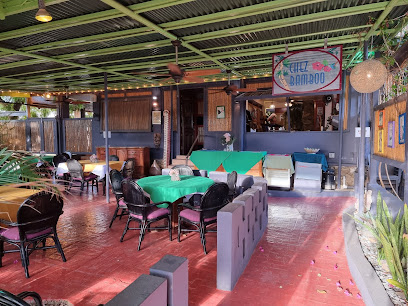
Bath and Turtle and Rendezvous Bar
Experience the flavors of the Caribbean at Bath and Turtle and Rendezvous Bar, a culinary treasure in Spanish Town, British Virgin Islands.
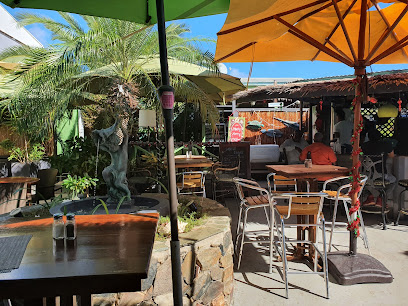
Spanish Town Cafe
Discover the vibrant flavors of the Caribbean at Spanish Town Cafe, a local gem in the British Virgin Islands, offering delicious meals and a warm atmosphere.
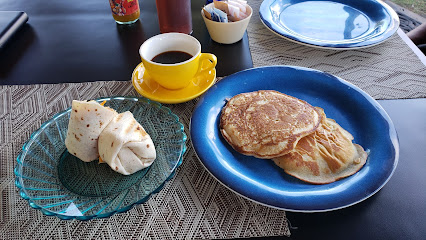
Mermaid's Dockside Bar and Grill
Savor the flavors of the Caribbean at Mermaid's Dockside Bar and Grill, where stunning views and delicious cuisine meet in Spanish Town.

Good Vibes Bar & Grill
Experience the vibrant flavors and friendly atmosphere at Good Vibes Bar & Grill in the heart of Spanish Town, British Virgin Islands.
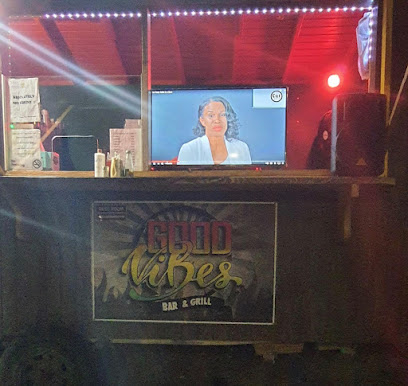
Tropical Trapping
Experience the vibrant flavors of the British Virgin Islands at Tropical Trapping, where every meal is a celebration of local culinary heritage.
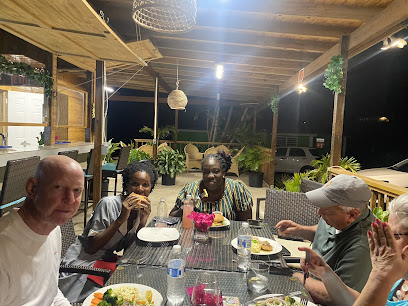
Green House
Experience the vibrant atmosphere of the Green House, a tropical bar in Spanish Town offering delicious cocktails and stunning island views.
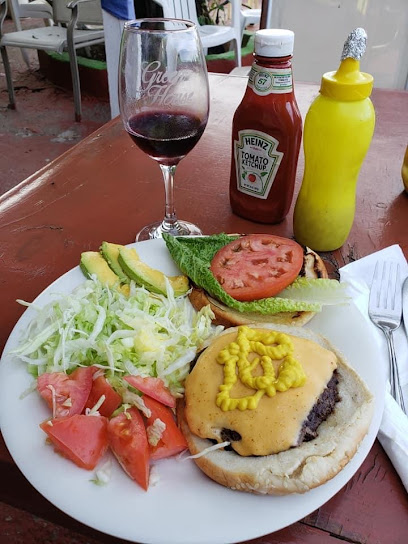
Wheel House Restaurant & Bar
Savor the flavors of the Caribbean with breathtaking ocean views at Wheel House Restaurant & Bar in Virgin Gorda.

Fisher’s Cove Beach bar
Experience the vibrant atmosphere of Fisher’s Cove Beach Bar, the ultimate destination for relaxation in the British Virgin Islands.
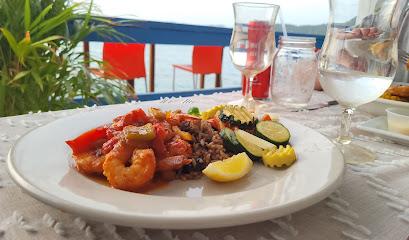
D’s Roc Bar
Experience the vibrant Caribbean spirit at D's Roc Bar, where flavorful grilled dishes and a lively atmosphere await in Spanish Town.
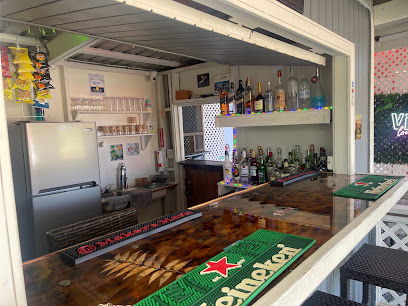
La Copa Bar
Experience the vibrant nightlife of Spanish Town at La Copa Bar, a local favorite for refreshing drinks and a lively atmosphere.

Darios bar and restaurant
Discover the flavors of the British Virgin Islands at Darios Bar and Restaurant, where every meal is a celebration of local cuisine and warm hospitality.

OV's Bar
Discover the lively spirit of Caribbean nightlife at OV's Bar in Spanish Town, British Virgin Islands, where good drinks and great company await.

Beer Belly
Experience the lively ambiance and refreshing drinks at Beer Belly, the heart of Spanish Town's nightlife in the British Virgin Islands.

Sip & Dip Restaurant
Experience the vibrant flavors of the Caribbean at Sip & Dip Restaurant in Spanish Town, British Virgin Islands, where every meal is a celebration of local cuisine.

Local Phrases
-
- HelloHola
[oh-lah] - GoodbyeAdiós
[ah-dee-ohs] - YesSí
[see] - NoNo
[no] - Please/You're welcomePor favor/De nada
[por fah-vor/deh nah-dah] - Thank youGracias
[grah-see-ahs] - Excuse me/SorryPerdón/Lo siento
[pair-dohn/loh see-ehn-toh] - How are you?¿Cómo estás?
[koh-moh ehs-tahs] - Fine. And you?Bien. ¿Y tú?
[byen. ee too] - Do you speak English?¿Hablas inglés?
[ah-blahs een-glays] - I don't understandNo entiendo
[noh ehn-tee-ehn-doh]
- HelloHola
-
- I'd like to see the menu, pleaseMe gustaría ver el menú, por favor
[meh goos-tah-ree-ah behr ehl meh-noo, poor fah-vor] - I don't eat meatNo como carne
[noh koh-moh kahr-neh] - Cheers!Salud!
[sah-lood] - I would like to pay, pleaseMe gustaría pagar, por favor
[meh goos-tah-ree-ah pah-gahr, poor fah-vor]
- I'd like to see the menu, pleaseMe gustaría ver el menú, por favor
-
- Help!¡Ayuda!
[ah-yoo-dah] - Go away!¡Vete!
[veh-teh] - Call the Police!¡Llama a la Policía!
[yah-mah ah lah poh-lee-see-ah] - Call a doctor!¡Llama a un doctor!
[yah-mah ah oon dohk-tohr] - I'm lostEstoy perdido
[ehs-toy pair-dee-doh] - I'm illEstoy enfermo
[ehs-toy ehn-fehr-moh]
- Help!¡Ayuda!
-
- I'd like to buy...Me gustaría comprar...
[meh goos-tah-ree-ah kohm-prahr] - I'm just lookingSólo estoy mirando
[soh-loh ehs-toy mee-rahn-doh] - How much is it?¿Cuánto cuesta?
[kwan-toh kwehs-tah] - That's too expensiveEso es demasiado caro
[eh-soh ehs deh-mah-see-ah-doh kah-roh] - Can you lower the price?¿Puede bajar el precio?
[pweh-deh bah-hahr ehl pree-syoh]
- I'd like to buy...Me gustaría comprar...
-
- What time is it?¿Qué hora es?
[keh oh-rah ehs] - It's one o'clockEs la una
[ehs lah oo-nah] - Half past (10)Las diez y media
[lahs dyehs ee meh-dee-ah] - MorningMañana
[mah-nyah-nah] - AfternoonTarde
[tahr-deh] - EveningNoche
[noh-cheh] - YesterdayAyer
[ah-yehr] - TodayHoy
[oy] - TomorrowMañana
[mah-nyah-nah] - 1Uno
[oo-noh] - 2Dos
[dohs] - 3Tres
[trehs] - 4Cuatro
[kwah-troh] - 5Cinco
[seen-koh] - 6Seis
[says] - 7Siete
[syeh-teh] - 8Ocho
[oh-choh] - 9Nueve
[nweh-veh] - 10Diez
[dyehs]
- What time is it?¿Qué hora es?
-
- Where's a/the...?¿Dónde está...?
[dohn-deh ehs-tah] - What's the address?¿Cuál es la dirección?
[kwal ehs lah dee-rehk-syohn] - Can you show me (on the map)?¿Puedes mostrarme (en el mapa)?
[pweh-dehs mohs-trar-meh (ehn ehl mah-pah)] - When's the next (bus)?¿Cuándo es el próximo (autobús)?
[kwan-doh ehs ehl proh-kshee-moh (ow-toh-boos)] - A ticket (to ....)Un boleto (a ....)
[oon boh-leh-toh (ah)]
- Where's a/the...?¿Dónde está...?
History of Spanish Town
-
Before the arrival of European settlers, the area now known as Spanish Town was inhabited by the indigenous Arawak and later, the Carib peoples. These early inhabitants were skilled in fishing, agriculture, and pottery, and their legacy is still evident in the region through archaeological findings and cultural influences.
-
Spanish Town, also known as Virgin Gorda, received its name from early Spanish explorers in the late 15th and early 16th centuries. The name 'Virgin Gorda' translates to 'Fat Virgin,' a reference to the island's shape, which the explorers believed resembled a reclining woman. The Spanish influence is still evident in the town's name and some of its early architectural styles.
-
In the 17th century, Spanish Town became part of the British Virgin Islands, a British colony. The British influence introduced new administrative systems, trade practices, and architectural styles. The remnants of British colonial architecture can still be seen in some of the older buildings in Spanish Town, giving visitors a glimpse into the town's colonial past.
-
One of the most significant historical landmarks in Spanish Town is the Copper Mine. Established by Cornish miners in the 19th century, the mine played a crucial role in the local economy. Visitors can explore the ruins of the mine and imagine the bustling activity that once took place there. The site offers spectacular views of the coastline and is a testament to the area's industrial heritage.
-
In the mid-20th century, Spanish Town began to transform into a popular tourist destination. The natural beauty of places like The Baths, with their unique rock formations and crystal-clear waters, attracted visitors from around the world. This boom in tourism led to the development of resorts, marinas, and other amenities, turning Spanish Town into a hub of activity and a gateway to exploring the British Virgin Islands.
-
Spanish Town is not just a historical site but also a vibrant community with rich cultural traditions. The annual Spanish Town Fisherman’s Jamboree is a highlight, celebrating the town's maritime heritage with boat races, fishing competitions, and local cuisine. This event, along with other cultural festivals, showcases the town's blend of indigenous, Spanish, and British influences, offering visitors a unique cultural experience.
Spanish Town Essentials
-
Spanish Town is located on the island of Virgin Gorda in the British Virgin Islands. The nearest international airport is Terrance B. Lettsome International Airport (EIS) on Beef Island, which is connected to Tortola by a short bridge. From there, you can take a ferry to Spanish Town. Direct ferry services are available from Tortola, or you can charter a boat for a more personalized experience. Alternatively, you can fly directly into Virgin Gorda Airport (VIJ) from San Juan, Puerto Rico, which has regular flights.
-
Once in Spanish Town, transportation options include taxis, rental cars, and scooters. Taxis are readily available but can be expensive, so agree on the fare before starting your trip. Car rentals allow for more flexibility and can be arranged at the airport or through local agencies. Scooters are a popular choice for short distances and exploring the island. Walking is also a viable option, especially within Spanish Town itself, as many attractions are close to each other.
-
The official currency in the British Virgin Islands is the US Dollar (USD). Credit and debit cards are widely accepted in hotels, restaurants, and larger shops. However, it's advisable to carry some cash for smaller establishments and tips. ATMs are available in Spanish Town, but it's wise to withdraw sufficient cash before heading to more remote areas of the island.
-
Spanish Town is generally a safe destination for tourists. However, standard precautions should be taken. Avoid walking alone at night in poorly lit areas and keep an eye on your belongings in crowded places. There are no specific high-crime areas targeting tourists, but it's always best to stay vigilant and aware of your surroundings. Petty theft can occur, so be sure to secure your valuables.
-
In case of emergency, dial 911 for immediate assistance. Spanish Town has a local police station and medical facilities to handle emergencies. It is recommended to have travel insurance that covers medical emergencies. For minor health issues, there are pharmacies where you can purchase over-the-counter medications. Ensure you know the location of the nearest medical facility and keep important contact numbers handy.
-
Fashion: Do dress casually but respectfully; beachwear is acceptable at the beach but not in town. Religion: Do respect local customs and traditions, especially when visiting churches. Public Transport: Do be courteous and greet the driver and other passengers. Don't eat or drink on public transport. Greetings: Do greet locals with a friendly 'Good morning' or 'Good afternoon.' Eating & Drinking: Do try local dishes and accept food offerings graciously. Don't refuse hospitality, as it is considered impolite.
-
To experience Spanish Town like a local, visit the local markets where you can buy fresh produce and handmade crafts. Engage with the locals; they are often friendly and willing to share stories about the island's history and culture. Don't miss a trip to The Baths, a unique rock formation and beach area. For a less touristy experience, consider visiting the Copper Mine ruins to learn about the island's mining history. Additionally, try to attend local events and festivals to immerse yourself in the vibrant local culture.
Trending Landmark in Spanish Town
-
The Baths
-
Cyril B. Romney Tortola Pier Park
-
CocoMaya Restaurant
-
Rosewood Little Dix Bay
-
Devil's Bay National Park
-
Hog Heaven
-
Soper's Hole Wharf & Marina
-
Top of the Baths
-
Cane Garden Bay
-
J.R. O'Neal Botanical Gardens
-
Gorda Peak National Park
-
Callwood Rum Distillery
-
Virgin Gorda Yacht Harbour
-
Chez Bamboo Restaurant
-
Aromas Cigar & Martini Bar, BVI
Nearby Cities to Spanish Town
-
Things To Do in The Valley
-
Things To Do in Virgin Gorda
-
Things To Do in Road Town
-
Things To Do in Tortola
-
Things To Do in West End
-
Things To Do in Anegada
-
Things To Do in Jost Van Dyke
-
Things To Do in Culebra
-
Things To Do in Vieques
-
Things To Do in Fajardo
-
Things To Do in Luquillo
-
Things To Do in West End Village
-
Things To Do in Long Bay Village
-
Things To Do in South Hill
-
Things To Do in Blowing Point Village








